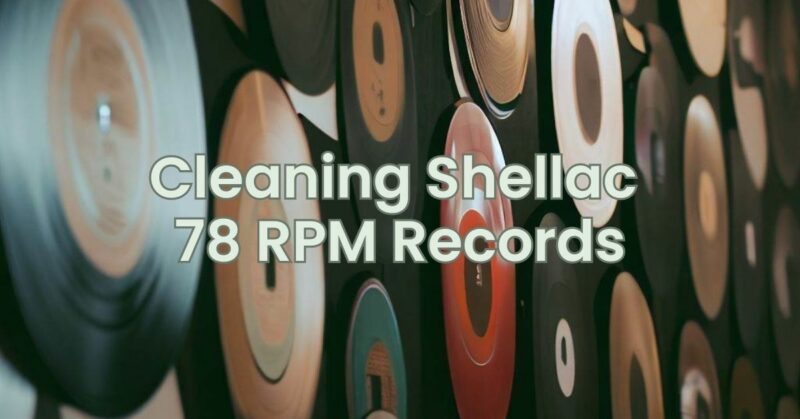Shellac 78 RPM records, with their unique sound and historical significance, require special care and maintenance to preserve their quality and longevity. Cleaning these vintage records properly is crucial to remove dust, dirt, and grime accumulated over the years. In this article, we will provide you with a step-by-step guide on how to clean shellac 78 RPM records effectively, ensuring optimal sound reproduction and preservation.
- Gather the Necessary Supplies: Before you begin cleaning your shellac 78 RPM records, gather the following supplies:
- Soft, lint-free cloths or microfiber cloths
- Distilled water
- Isopropyl alcohol (90% concentration or higher)
- A record cleaning brush or a carbon fiber brush
- A record cleaning solution specifically designed for shellac records (optional but recommended)
- Inspect the Records: Before cleaning, carefully inspect each shellac 78 RPM record for visible dirt, dust, or debris. Take note of any significant damage, such as cracks or chips, as these may require special handling or professional restoration.
- Dry Cleaning: Start by dry cleaning the records to remove loose debris and dust. Use a record cleaning brush or a carbon fiber brush to gently brush the surface of the record in a circular motion, following the grooves. This will help loosen and remove any loose particles.
- Wet Cleaning: If the records require further cleaning, proceed with wet cleaning. Mix a solution of distilled water and isopropyl alcohol in a 4:1 ratio. Moisten a soft, lint-free cloth with the solution (or use a record cleaning solution specifically designed for shellac records) and gently wipe the record surface in a circular motion. Be careful not to apply excessive pressure that could damage the record or push debris further into the grooves.
- Removing Stubborn Stains or Residue: For stubborn stains or residue, you can use a more concentrated solution of isopropyl alcohol and distilled water. Dampen a cloth with this solution and carefully target the affected area, gently rubbing in a circular motion. Take caution not to saturate the label area or allow liquid to seep into the record label.
- Rinsing: After cleaning, rinse the record with distilled water to remove any remaining cleaning solution or residue. Moisten a clean cloth with distilled water and gently wipe the record surface to ensure all cleaning agents are thoroughly removed.
- Drying: After rinsing, use a dry, lint-free cloth to gently pat the record surface and remove excess moisture. Allow the record to air dry in a dust-free environment for a sufficient period of time until completely dry. Avoid using heat or direct sunlight for drying, as they can cause warping or other damage to the shellac.
- Storing Properly: Once your shellac 78 RPM records are clean and dry, store them in protective sleeves specifically designed for shellac records. These sleeves help prevent dust, scratches, and exposure to environmental elements that can degrade the record’s quality over time. Store the records in an upright position in a cool, dry location away from direct sunlight.
Additional Tips:
- Handle the records by the edges or the label area to minimize contact with the playable surface.
- Clean your record player’s needle regularly to prevent accumulated debris from transferring to the records during playback.
- If you encounter severely dirty or damaged shellac records, consider seeking professional restoration services to ensure their proper cleaning and preservation.
Properly cleaning and maintaining shellac 78 RPM records is vital for preserving their sound quality and extending their lifespan. By following these step-by-step instructions and adhering to best practices, you can effectively remove dirt, dust, and grime from these vintage records, allowing them to be enjoyed for years to come. Remember to handle the records with care, use appropriate cleaning solutions, and store them in a protective manner to ensure their longevity and the continued enjoyment of their timeless music.


